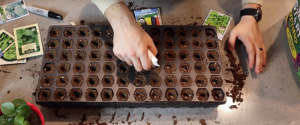Asparagus

Health Power
Improves digestion by increasing number and health of good bacteria in large intestine that suppress harmful bacteria. Promotes overall health with wide range of nutrients. Amino acid asparagine is a natural diuretic. Used to reduce swelling; may help diminish premenstrual water retention. Contains B vitamin folate (more than 50 percent RDA), a crucial nutrient for normal fetal development during pregnancy. Helps avoid birth defects by helping DNA synthesize and replicate properly. Pyridoxine promotes heart health by lowering homocysteine levels in the blood stream.
Vitamin and Mineral Content
Vitamins – K, B9 (Folate), C, A, B1 (Thiamin), B2 (Riboflavin), B6 (Pyridoxine) and B3 (Niacin)
Minerals – Manganese, Copper, Phosphorus, Potassium, Iron, Zinc, Magnesium, Selenium and Calcium
Disease Prevention
High Vitamin B9 (folate) concentration helps reduce risk of heart disease by lowering high levels of homocysteine in the blood; converts homocysteine to cysteine. Asparagus also has phytonutrients that may prevent growth of many cancer cell lines (notably colon cancer).
How to Grow
A perennial plant needing initial investment but offering valuable returns. Choose plot with plenty of sunshine and exceptional drainage. Amend soil with compost or quality planting mix for loam with good air space, drainage and nutrient availability. In heavy soil, work in more compost or planting mix to raise bed slightly. Soil pH should be above 6; add lime as needed. Start from seed or buy plants with one-year-old root crowns from a reliable nursery, saving the first year of effort. Dig a trench 6 inches deep and 1 foot wide, with center raised a little. Soak root crowns in water for 1 hour. Plant one foot apart, making sure to spread roots around the slightly raised center of trench. First year, water well, never depriving plants of water. Each spring, apply more mix rich in organic matter and nutrients. In fall, mulch around plant with compost or balanced planting mix. Full harvest comes two years from crown stage or three years from seed. Begin harvest in second year (after planting crowns) when shoots grow more than 5 inches. Harvest all but a few shoots by cutting or snapping them just below ground shortly before tip opens. Be careful not to hurt crowns when you cut.
Insect Control
Asparagus rust, slugs and asparagus beetles are most common pests. Beetles controlled by hand removing. If seriously infested, spray or dust with rotenone. Avoid asparagus rust (rust-colored spots on leaves and stems) by buying resistant strains from trusted nursery. Slugs controlled several ways. Physically remove and dispose each morning or night. Sink saucers of beer into soil to attract and drown. When plants are still small, cut off plastic bottles and secure over plants. Spread a thin layer of lime or soot around plant to repel slugs.
Tips
To preserve soil balance, start new bed every 10 years. (Three years before discontinuing old one to avoid missing a season of tasty, fresh, homegrown asparagus.) To avoid crown rot, do not let crowns lie in bed of water. Slightly raised beds help prevent this.
___________________________________________________________________________________
What do you need to start indoor growing?
It’s easy to buy your transplants from the garden center each season, but there are lots of reasons to sprout your own seeds at home. It will save a substantial amount of money, you’ll have access to a wider range of plant varieties, and you’ll have the satisfaction of seeing a plant through its full life cycle. But if you’re a new seed sprouter. It’s really quite simple once you understand the basics. So if you’re ready to get sprouting, here are the basic steps to follow.






